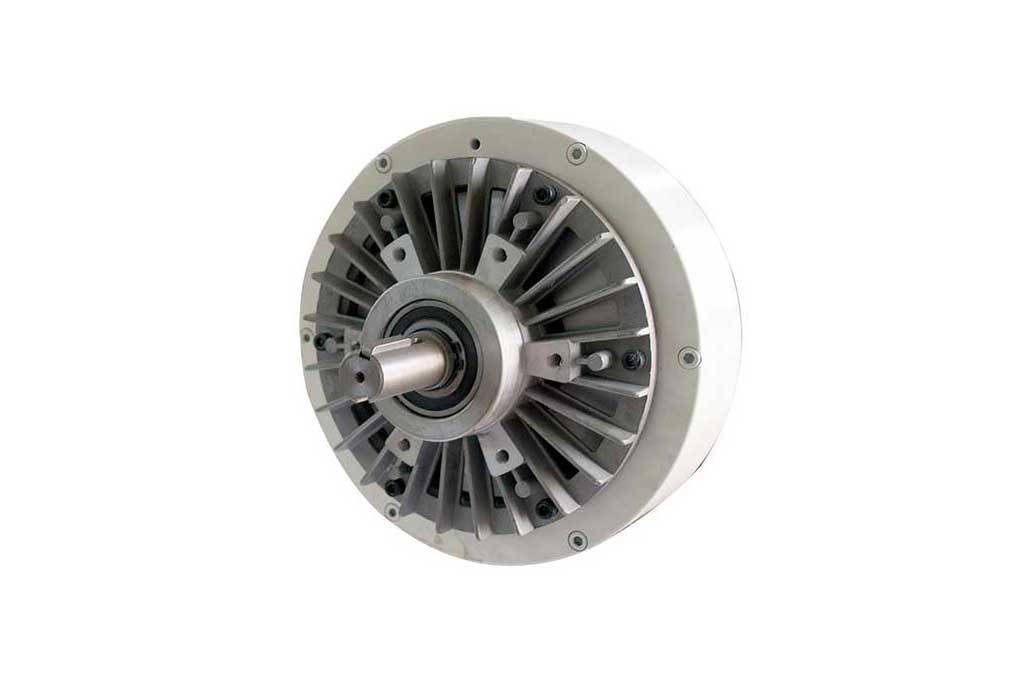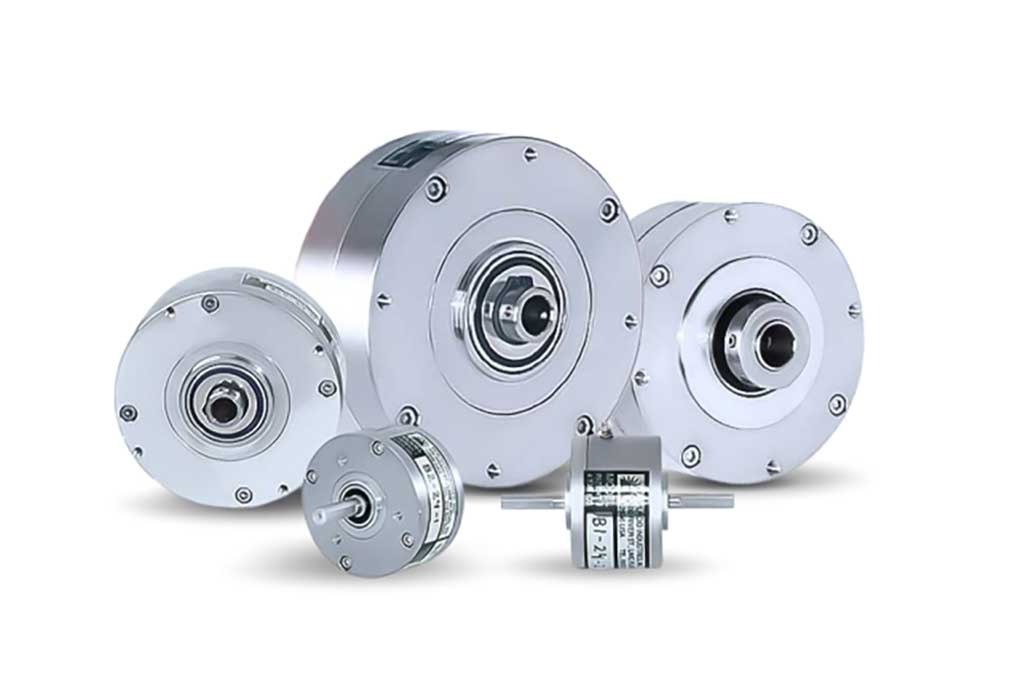If the application would make a hysteresis brake cog, consider using a magnetic particle brake. Cogging in the case of brakes can be defined as pulsing output torque. The brake tries to lock into preferred positions (about 12 to 25 positions per revolution) depending on the number of primary poles. Magnetic particle brakes do not cog.


Application 1#: Stop / Start
Brakes can be energized to stop a system, then de-energized to allow motion to start. The de-energizing would initiate a hysteresis brake to cog. If the input current to a hysteresis brake is held constant, and a motor or other device rotates and then dwells then rotates again, the brake would not cog.
Application 2#: Incorrect Changes in Input Current
While setting up for a tensioning application, if the operator even momentarily adjusts the brake’s input current substantially higher than needed, and then lowers the current to near zero current with the brake shaft stationary or rotating very slowly, the hysteresis brake will cog.
Application 3#: Moderate Speed Applications
These applications match the torque and heat dissipation characteristics of magnetic particle brakes. Magnetic particle brakes would be more cost effective, and physically smaller than hysteresis brakes. Slip speed from about 30 to several hundred RPM is ideal. Higher slip RPM is acceptable, with a limited duty cycle. Slower speed might work, if perfectly smooth slip torque is not required. A torsionally rigid system with high inertia would mask any slight stick-slip of the particle brake at very low RPM. Typical examples; testing gear motors & mechanisms or moderate speed tension control for winding/unwinding.
Application 4#: Quick Acceleration and Deceleration
High acceleration and deceleration are needed to reduce cycle time in motion control applications. Magnetic particle brakes have faster response time and significantly lower inertia, which allows shorter stops & starts. Typical examples; tension control of the wire in a coil winding machine, or any machine with rapid indexing movement (incremental stop & start) of a web. With a hysteresis brake, the flywheel effect of the brake rotor might stretch or snap the web when accelerating. During deceleration/stopping, the high inertia hysteresis brake might coast excessively which could cause slack in the web.
Application 5#: Holding / Positioning
A magnetic particle brake is the better choice for precise holding or positioning as this would also cause a hysteresis brake to cog. A magnetic particle brake will not have any shaft movement unless the applied torque exceeds the braking torque set by the input current. A hysteresis brake can hold a shaft in position, but the amount of holding torque is lower than the sliding torque. Braking torque will ramp up as the shaft is forced to turn in either direction, reaching the sliding torque amount in about 10°. The shaft would spring back about 10° when the external torque is removed. For non-precision holding, these limitations would probably not be a problem.
Application 6#: Stepper Motor Testing
A brake with low inertia is best for testing acceleration of stepper motors. A stepper motor might not be able to start moving with a very large inertial load. Use a magnetic particle brake because hysteresis brakes have about 20 times higher inertia compared to a magnetic particle brake of similar rated torque.
Application 7#: If Required Torque is Higher than Available Hysteresis Brakes
Use a magnetic particle brake if torque requirements are higher than available hysteresis brakes. For long term, high duty cycle applications run it at the lower half of its torque range for extended life. If the brake is sized by heat dissipation requirements, the brake might have too much torque. Under this condition, add a gearbox to better match the torque needed to the very large magnetic particle brake.
Read More: Hysteresis Wikipedia.